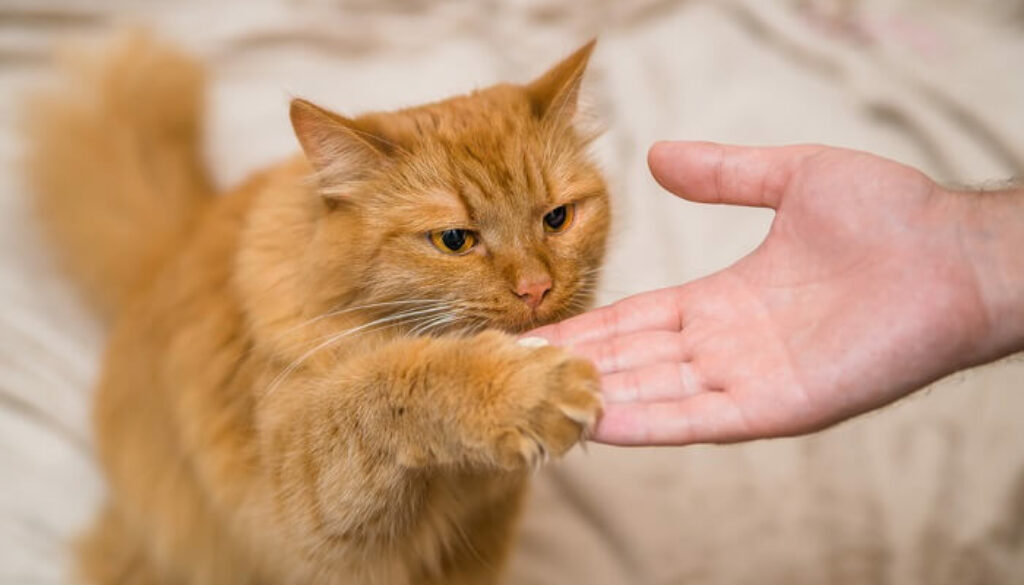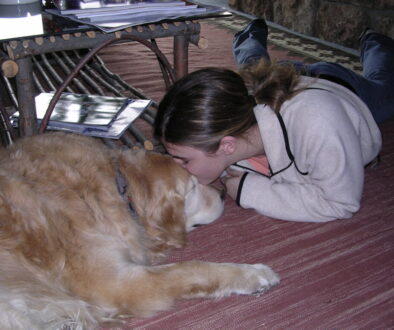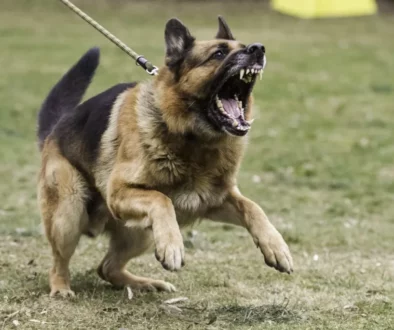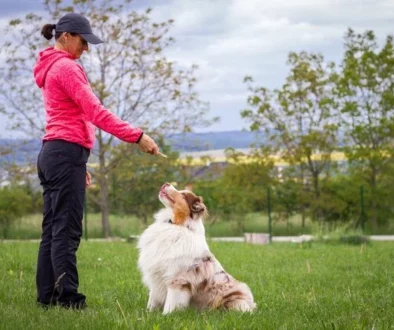Advanced Cat Training: Beyond the Basics
Training a cat goes far beyond basic commands like sit or stay. While these commands are important for everyday living, there are many other advanced training techniques that can be taught to cats. In this article, we will explore the world of advanced cat training and provide you with helpful tips and techniques to take your cat’s training to the next level.
Welcome to the world of advanced cat training! In this section, we will introduce the concept of advanced training and explain why it is beneficial for both cats and their owners. We will also discuss the importance of building a strong bond with your cat before diving into advanced training techniques.
Understanding Cat Behavior
Understanding the behavior of cats is crucial when it comes to training them effectively. Cats have unique instincts and behaviors that drive their actions, and by understanding these, you can create a training plan that caters to their natural tendencies.
Instincts and Natural Behaviors:
- Hunting instinct: Cats are natural hunters and have a strong prey drive. They may exhibit stalking, chasing, and pouncing behaviors.
- Scratching instinct: Cats have a natural need to scratch to remove the outer layer of their claws, mark territory, and stretch their muscles.
- Territory marking: Cats have scent glands in their paws and cheeks, and they mark their territory by rubbing against objects.
- Solitary nature: Cats are solitary animals by nature and require their own personal space. They may not always enjoy constant physical contact.
- Grooming behavior: Cats spend a significant amount of time grooming themselves to keep clean and maintain their coats.
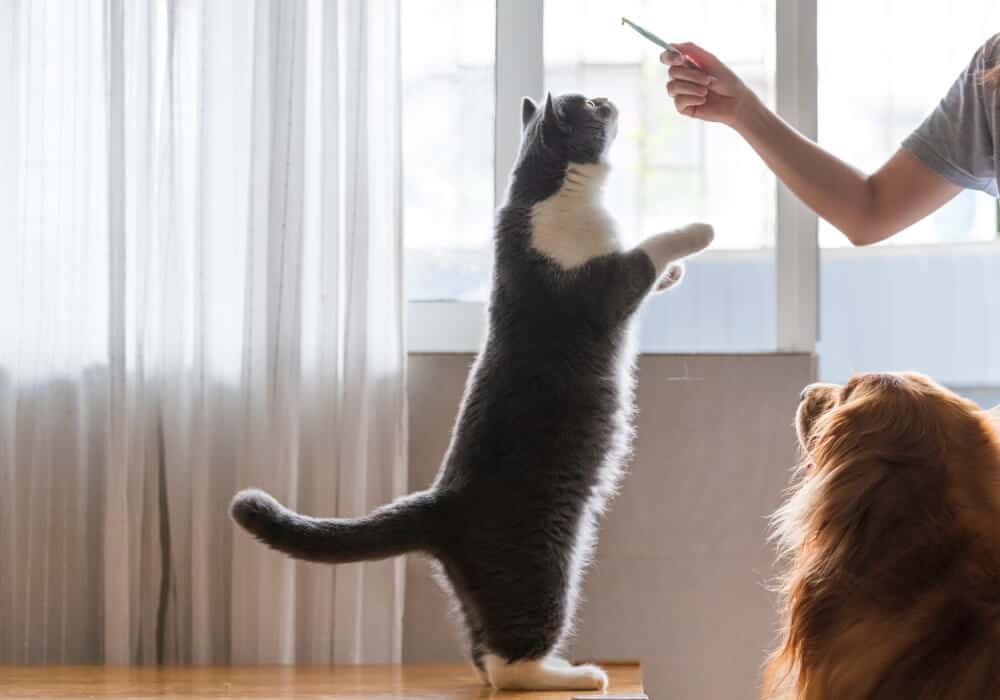
Communication Signals:
- Body language: Cats communicate through their body postures. Understanding their body language can help you gauge their mood and intentions.
- Vocalizations: Cats use various vocalizations, such as meowing, hissing, purring, and growling, to communicate their needs and emotions.
- Tail movements: The position and movement of a cat’s tail can convey different messages. For example, an erect, twitching tail may indicate excitement or agitation.
- Pheromones: Cats release pheromones through facial rubbing and spraying to mark their territory and communicate with other cats.
Social Behavior:
- Social hierarchy: Cats have a hierarchical structure, and they establish dominance through body language, posturing, and sometimes, gentle play-fighting.
- Play behavior: Cats engage in play to fulfill their hunting instincts and bond with their human companions. Play sessions should mimic hunting behaviors.
Stress and Anxiety:
- Causes of stress: Changes in the environment, lack of stimulation, unfamiliar people or animals, and major life changes can contribute to stress in cats.
- Behavioral signs of stress: Hiding, excessive grooming, aggression, loss of appetite, and changes in litter box habits may indicate that a cat is stressed.
- Creating a stress-free environment: Providing hiding spots, vertical spaces, interactive toys, and a consistent routine can help alleviate stress in cats.
Setting Training Goals
Setting clear and achievable training goals is essential when it comes to advanced cat training. Here are some steps to help you set effective training goals for your feline companion:
- Assess your cat’s abilities: Evaluate your cat’s current skill level and behavior to determine what they are already capable of and where they may need improvement. This will help you establish a baseline for setting realistic goals.
- Identify specific behaviors or skills: Decide on the specific behaviors or skills you want to teach your cat. Whether it’s mastering a complex trick, overcoming a fear or aggression, or developing better obedience, having clear targets will guide your training efforts.
- Break goals into smaller steps: Break down each desired behavior or skill into smaller, more manageable steps. This makes it easier for your cat to understand and learn, as well as for you to track progress along the way.
- Prioritize goals: Determine which goals are most important and prioritize them accordingly. Focus on one or two goals at a time to avoid overwhelming your cat and yourself. Once you’ve achieved those goals, move on to the next ones.
- Consider your cat’s personality and abilities: Take into account your cat’s individual personality, physical capabilities, and limitations when setting goals. Not all cats are capable of the same things, so tailor your goals to suit your cat’s unique qualities.
- Set a timeline: Establish a realistic timeline for achieving each goal. Remember that training takes time and patience, so be flexible and adjust your timeline if needed.
- Celebrate milestones: Celebrate each milestone or accomplishment along the way. This will help keep both you and your cat motivated and engaged in the training process.
Developing a Training Routine
Consistency and routine are key elements in successful cat training. Here’s how to develop a training routine for your cat:
- Set aside dedicated training sessions: Allocate specific times each day for training sessions. Cats thrive on routine, so having regular training sessions helps them understand when it’s time to focus and engage in learning.
- Choose a quiet and distraction-free environment: Find a quiet and comfortable space in your home where you can conduct the training sessions without interruptions or distractions. A calm environment allows your cat to concentrate and learn more effectively.
- Keep sessions short and frequent: Cats have relatively short attention spans, so aim for training sessions that are no longer than 10-15 minutes. However, try to have multiple short sessions throughout the day to reinforce the learning and keep your cat engaged.
- Use positive reinforcement: Always focus on positive reinforcement techniques during training. Reward your cat with treats, verbal praise, or play whenever they exhibit the desired behavior. This positive association will motivate them to continue learning.
- Be patient and consistent: Remember that training takes time, so be patient with your cat’s progress. Consistency is vital in reinforcing behaviors, so be consistent in your cues, rewards, and expectations.
- Incorporate training into daily activities: Extend the training beyond dedicated sessions by incorporating cues and commands into your daily interactions with your cat. This helps reinforce their training and encourages them to use their learned behaviors in real-life situations.
- End sessions on a positive note: Always end each training session on a positive note, even if you didn’t achieve the desired outcome. Offer praise and rewards for the effort your cat has put in, and don’t dwell on mistakes or setbacks. This keeps the training experience enjoyable for both of you.
Positive Reinforcement Techniques
Positive reinforcement is a powerful and effective technique for training cats. Here are some techniques to implement positive reinforcement in your advanced cat training:
- Treat rewards: Use small and tasty treats as immediate rewards when your cat successfully performs a desired behavior. Make sure the treats are highly appealing to motivate your cat.
- Verbal praise: Cats respond to positive verbal reinforcement. Use a soft and encouraging tone of voice to express your satisfaction and approval of their actions.
- Play and interactive toys: Incorporate playtime as a reward during the training sessions. Use interactive toys that also stimulate your cat’s natural hunting instincts and keep them engaged.
- Clicker training: Clicker training involves using a clicker (a small handheld device that makes a distinct clicking sound) to signal to your cat when they perform the desired behavior correctly. Pair the click with an immediate reward to reinforce the behavior.

- Petting and affection: Many cats enjoy physical contact as a form of reward. Offer gentle petting or a soothing massage when your cat performs well during training sessions.
- Timing and precision: Timing is crucial in positive reinforcement. Reward your cat immediately (within a few seconds) after they exhibit the desired behavior to help them make the connection between the behavior and the reward.
- Consistency and repetition: Consistency is essential in positive reinforcement training. Ensure that you consistently reward the desired behavior every time it is performed correctly. Repetition helps reinforce the behavior and strengthens the association with the reward.
Remember to stay patient and positive throughout the training process. Cats respond best to encouragement and rewards, and by using positive reinforcement techniques, you will create a learning environment that engages and motivates your furry friend.
Clicker Training
Clicker training is a positive reinforcement technique that involves using a clicker to mark desired behaviors in cats. Here’s how to use clicker training in your advanced training sessions:
- Introduce the clicker: Get your cat accustomed to the sound of the clicker by clicking it and immediately offering a treat. Repeat this process several times until your cat associates the clicker sound with a positive outcome.
- Decide on a target behavior: Identify a specific behavior you want to train, such as sitting, jumping through a hoop, or retrieving an object. Break down the behavior into smaller steps.
- Click and reward: As your cat performs the desired behavior or makes progress towards it, click the clicker the moment they do it correctly, and immediately offer a treat. This helps them understand what is being rewarded.
- Repeat and reinforce: Repeat the process of clicking and rewarding whenever your cat displays the desired behavior. Consistency is key in reinforcing the connection between the behavior and the reward.
- Fade out the clicker: Once your cat has learned the behavior, gradually reduce the frequency of using the clicker. Start by clicking every other time your cat performs the behavior, then every third time, and so on. Eventually, you can stop using the clicker altogether, and the behavior will be solidified.
Target Training
Target training involves teaching a cat to touch a specific object, usually a small target stick or your hand, with their nose or paw. Here’s how to use target training in your advanced cat training:
- Choose a target object: Select a small, handheld target stick or an object of your choice that your cat can easily touch with their nose or paw. Ensure it’s something safe and not intimidating.
- Introduce the target: Show the target object to your cat and allow them to sniff and investigate it. When they show interest, click the clicker (if using one) and offer a treat to reinforce their curiosity.
- Target touch: Present the target object near your cat’s nose or paw, and when they make contact with it, click and reward them. Repeat this several times, gradually moving the target a bit farther each time.
- Add a command: Once your cat is consistently touching the target, introduce a verbal cue, such as “touch” or “target.” Say the cue just before presenting the target object, and when your cat touches it, click and reward.
- Shape behavior and expand skills: Use the target to guide your cat through different behaviors and tricks. For example, if you want your cat to jump through a hoop, hold the hoop as the target object and guide them through it, clicking and rewarding each successful attempt.
Teaching Advanced Tricks:
Teaching advanced tricks to your cat can be a fun and rewarding experience. Here are some tips to help you teach complex behaviors:
- Break it down: Analyze the desired trick and break it down into smaller, achievable steps. Teach each step separately and gradually put them together to form the complete trick.
- Use shaping: Use the principles of shaping to guide your cat through the desired behavior. Reinforce and reward any progress towards the trick and gradually raise your criteria until the trick is fully performed.
- Capture natural behaviors: Observe your cat to see if they naturally exhibit any aspects of the desired trick. For example, if you want your cat to roll over, click and reward when they naturally lie on their side or roll slightly. Gradually shape this into a full rollover.
- Patience and practice: Teaching advanced tricks may take more time and patience than basic behaviors. Practice regularly and be prepared for setbacks. Break the training sessions into shorter, focused sessions to keep your cat engaged and motivated.
- Use high-value rewards: For more challenging tricks, use high-value treats or rewards that your cat finds especially enticing. This can motivate them to put in the extra effort to learn and perform the trick.
Problem-Solving Skills
Developing problem-solving skills in your cat can help them overcome obstacles and challenges. Here are some tips to encourage problem-solving skills in your cat:
- Interactive toys and puzzles: Provide your cat with interactive toys and puzzles that require them to use their problem-solving skills to retrieve treats or toys. This stimulates their mind and encourages them to think creatively.
- Food-dispensing toys: Use food-dispensing toys that require your cat to figure out how to manipulate the toy to access the food. This encourages them to problem-solve and keeps them mentally stimulated.
- Hide treats or toys: Hide treats or toys around the house, encouraging your cat to use their senses and problem-solving skills to locate and retrieve them. Start with easier hiding spots and gradually increase the difficulty level.
- Train with new behaviors: Teach your cat new behaviors or tricks that require them to think and problem-solve. For example, teaching them to open a drawer or push a button can engage their problem-solving abilities.
- Provide environmental enrichment: Offer a variety of toys, scratching posts, climbing trees, and interactive play sessions to provide a stimulating environment that encourages your cat to explore and problem-solve.
Addressing Aggression and Fear
If your cat displays aggression or fear-related behaviors, addressing these issues is crucial for their well-being. Here are some steps to address aggression and fear in your cat:
- Identify triggers: Observe your cat and identify the specific situations, people, or objects that trigger their aggression or fear. Understanding the triggers will help you develop a plan to manage or desensitize them.
- Create a safe environment: Provide your cat with a safe space where they can retreat when they feel threatened or scared. This can be a separate room or an elevated area where they can relax and feel secure.
- Use desensitization techniques: Gradually expose your cat to the triggers in a controlled and positive manner. Start with a low-intensity version of the trigger and gradually increase the exposure as your cat becomes more comfortable. Pair each exposure with positive reinforcement, such as treats or praise.
- Counter-conditioning: Pair the triggers with positive experiences or rewards to help change your cat’s emotional response. For example, if your cat is afraid of new visitors, have the visitors offer treats or engage in play with your cat.
- Seek professional help: If the aggression or fear-related behaviors persist or escalate, consult with a professional animal behaviorist or veterinarian who specializes in cat behavior. They can provide guidance, assess the underlying causes, and develop a behavior modification plan tailored to your cat’s needs.
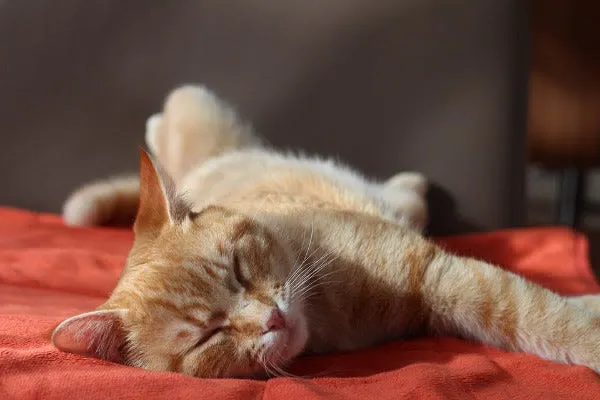
Conclusion
Advanced cat training offers an exceptional opportunity to take your bond with your feline companion to extraordinary heights. By building upon foundational training, incorporating clicker training, and addressing behavioral challenges, you can unlock your cat’s untapped potential. From agility training to fetching mastery and even toilet training, the possibilities are endless. So gear up with patience, dedication, and an open mind, as you embark on this exhilarating journey of advanced cat training: beyond the basics.
Also Read:
Pet Care Tips for Cats for Beginners
Pet Care Tips for Dogs for Beginners
